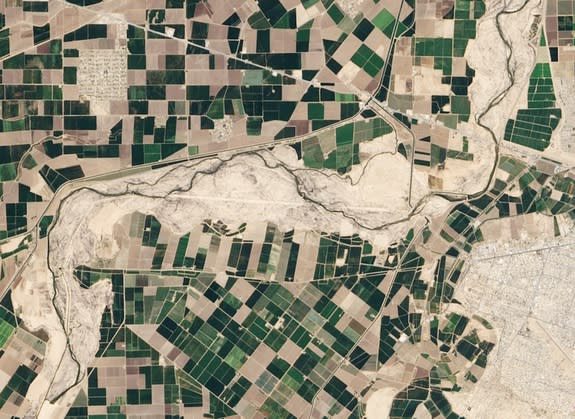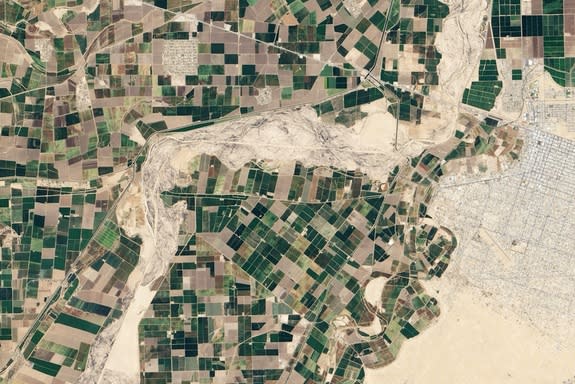Colorado River's New Flow Seen by Satellite (Photo)
A release of water down the Colorado River may not reach the sea, as hoped. But it is visible from space.
A new satellite image from Landsat 8 captured a view of the Colorado on April 16. The river is typically dry by the time it gets to this spot in northern Mexico, its flow diverted to feed thirsty farms both in that country and in the United States. The Colorado River has only rarely reached the sea since 1960.
This spring, however, both countries agreed to release more water than usual from the Colorado's dams in an effort to restore parched ecosystems, especially the Colorado Delta. This delta was a once-lush connection between the river and the Gulf of California. Before damming of the river began in the 1930s, some 4.9 trillion gallons (18.5 trillion liters) of water moved through the delta each year.
The loss of that water — and the annual floods that once fed riverbank and delta ecosystems — has desiccated vegetation and left migratory bird populations high and dry. In 2012, the United States and Mexico signed a water treaty which included a provision to send 34 billion gallons (130 billion liters) of water downstream to mimic one of these floods. The pulse is an historical event, as it is designed solely for the benefit of the environment.
This image, released by NASA's Earth Observatory, shows that pulse. For comparison, Earth Observatory also released a satellite image from April 29, 2013, before the pulse flow. Dry banks surrounded by green, irrigated farms are seen in both views.
Sand bars and shrubby riverbed have slowed the pulse of water, scientists have told the media, so it's not clear that the Colorado will reconnect with the sea. Nevertheless, conservation groups are working to plant trees and seed wetlands, an effort made possible by the injection of water into the ecosystem, according to Earth Observatory.
Follow Stephanie Pappas on Twitter and Google+. Follow us @livescience, Facebook & Google+. Original article on Live Science.
Copyright 2014 LiveScience, a TechMediaNetwork company. All rights reserved. This material may not be published, broadcast, rewritten or redistributed.



